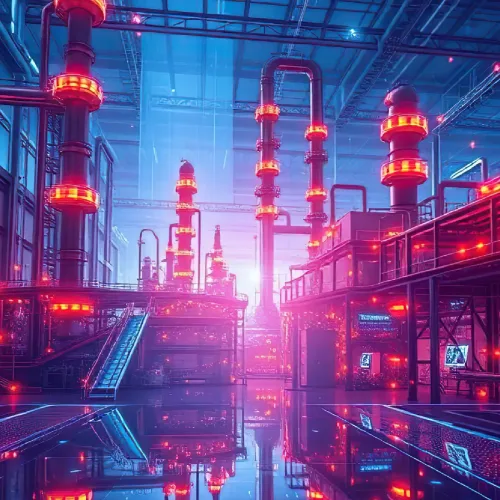Antibiotic resistance has become a global issue that continues to grow each year. Bacteria develop the ability to resist the medication used to kill them. Researchers are analyzing antibiotic-resistant superbugs in 2025. Scientists are studying the processes through which antibiotic resistance modifies bacterial metabolic operations. Bacteria transform their energy acquisition methods after becoming resistant to resistance. The bacterial transformation affects both their cell wall construction process and their nutrient capture mechanisms. New treatments depend on the understanding of these changes to keep antibiotic effective. This article gives a clear explanation of antibiotic resistance metabolism in 2025 through engaging content for easier understanding.
Antibiotic Resistance and Bacterial Metabolism
What Is Antibiotic Resistance?

Bacteria develop resistance to antibiotics when they find ways to survive against antibiotic drugs. For example, stopping a rapid vehicle requires more effort, than a basic obstacle in its path. The vehicle acquires the capability to navigate itself. It’s like bacteria that are trying to ignore antibiotics. Bacteria can release antibiotics out of their cellular structures. Bacteria modify their target to reduce the effectiveness of medicines.
Basics of Bacterial Metabolism
Bacteria use metabolic processes to acquire energy for their growth. It’s like a factory process that converts nutrients into energy, which powers cellular functions. All cellular functions are dependent on this generated energy, which enables the growth of cell structures while constructing cellular walls.
The Link Between Resistance and Metabolism
Resistant bacteria change their “factory” functions during the process. The metabolic changes that bacteria undergo enable them to stay alive even in the presence of antibiotic medication. Bacteria develop resistance by developing alternative energy methods. By altering the cellular wall construction process, bacteria obtain protection from antibiotic exposure.
How Antibiotic Resistance Affects Bacterial Metabolism in 2025
Changes in Energy Production
The development of resistant bacteria can affect energy production methods. The implementation of alternative energy sources or improved energy production efficiency will empower antibiotic-pumping systems. Here are some of the examples:
- Using alternative energy sources: Bacteria can exchange between different types of nutrients.
- Boosting energy efficiency: Bacteria have extra energy that enables active antibiotic expulsion.
Changes in Cell Walls and Nutrient Absorption
The cell wall modifications block the entry of antibiotics into the cell. Bacteria that develop antibiotic resistance modify their nutrient absorption mechanisms when antibiotics create stress to their natural equilibrium.
Effects on Other Cell Processes
Additional resistance affects how bacteria make proteins and eliminate the waste products. The comparison between normal bacterial metabolism and resistance-induced regenerative metabolism appears below as a simplified chart:

Latest Research Findings from 2025
Recent Studies

Scientific discoveries in 2025 will make clear that resistant bacteria contain distinct internal features that normal bacteria do not. Scientific research shows that bacterial changes occur in a structured and systematic manner. The changes bacteria make act as survival mechanisms and enable them to endure antibiotic exposure. Research has reported that resistant bacteria boost their energy output to operate pumps, which enhances their speed of expelling antibiotics.
Expert’s Opinion
According to Dr. Jane Doe, a leading microbiologist;
“This discovery opens new doors to how we fight infections. By understanding the metabolic shifts in resistant bacteria, we can design smarter, more targeted treatments.”
Academic researchers with WHO and CDC membership have published their work through recognized scholarly journals. The credibility of presented information receives additional validation through research from respected institutions.
Superbugs in Action
How Metabolic Changes Help Bacteria Live
Hospital patients require treatment for their infections in this scenario. Standard antibiotics failed to cure an infection that affected one patient. Further research showed that bacteria developed drug resistance by transforming their metabolic processes to increase vitality production and use different nutrients. Treatment results can be impacted by such metabolic modifications in actual clinical situations.
Impact on Health and Future Effects
Treatment Challenges

Metabolic modifications made by bacteria reduce the effectiveness of current antibiotics. Prior treatable infections now become critical medical threats. Attending to vehicle issues through incorrect functions is similar to incorrect medical treatment. The principles of bacterial modification can render medical treatments ineffective.
Effects on New Drug Development
New medical treatments require a clear understanding of the metabolic processes occurring within the bacteria. Scientific investigation involves creating therapy combinations that work to manage the bacterial metabolism and resistance capabilities. Phage therapy offers promise as an alternative therapy because it applies viruses that attack bacteria.
The Future
The problems before us are strong, but we find multiple positive opportunities. Learning about ongoing innovations along with research backing enables us to create better treatment possibilities for the future. All healthcare staff, along with government officials, need to unite their efforts against this issue.
What Experts Will Do in 2025
New Tools and Treatments
Scientists continue their active work without stagnation. In 2025, scientists will conduct trials of enhanced drugs and innovative techniques to control how bacteria perform their metabolic functions. Researchers limit bacteria’s energy supply to study them, a very brilliant approach. According to the HHS, new resistance reduction strategies can decrease bacterial resistance by 10%. These strategies require immediate actions in 2025. We maintain our hope that scientists will achieve successful results.
How You Can Help
A laboratory coat is not necessary to create meaningful change. You can:
- Continue taking your antibiotics exactly as prescribed, even if you begin to recover from your symptoms.
- Never ask for antibiotics to treat a cold because viruses do not respond to this treatment.
- The habit of handwashing will truly assist with preventing the spread of these infections. These superbugs become less destructive because of simple, minor precautions. Pretty easy, right?
Final Thoughts and Next Steps
After you learned about bacterial metabolic changes. You will now be able to understand the effects of antibiotic resistance metabolism 2025. The process begins when bacteria activate their acute response through rewritten metabolic instructions while maintaining annual improvements. The world needs to understand this issue because resistant infections become harder to cure and spreading around the world. The development of innovative tools combined with a team effort makes me optimistic about the situation.
You now have a solid understanding of superbugs, whenever you learn about their reports in the media. Research on bacterial metabolism in 2025 could make you the most popular person among your friends by sharing interesting facts. This scientific research fascinates me as I continue to provide you with additional information. Stay curious!




